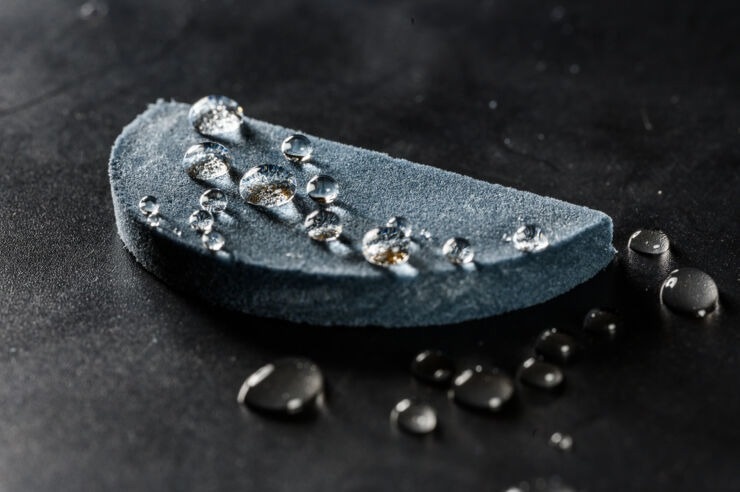The vast potential of high-frequency terahertz waves extends to various applications, such as cutting-edge medical imaging and communication.

Aerogel can obtain high hydrophobicity by simple chemical modifications. Image Credit: Thor Balkhed
Linköping University researchers in Sweden, as detailed in a study published in Advanced Science, have demonstrated the tunability of terahertz light transmission through an aerogel composed of cellulose and a conducting polymer. This breakthrough is a crucial advancement in expanding the scope of applications for terahertz waves.
Terahertz waves occupy a segment of the electromagnetic spectrum between microwaves and infrared light, characterized by exceptionally high frequency.
This unique quality makes the terahertz range promising for diverse applications, including space exploration, security technology, and communication systems. In the realm of medical imaging, terahertz waves offer a compelling alternative to X-Ray examinations, as they can penetrate most non-conductive materials without causing harm to tissues.
Despite the immense potential, several technological challenges must be addressed before terahertz signals can be widely adopted. Overcoming obstacles such as efficiently generating terahertz radiation and developing materials capable of receiving and modulating terahertz wave transmission is imperative for the widespread utilization of this promising technology.
Adjustable Filter
Scientists from Linköping University have created a substance with the ability to switch its absorption of terahertz signals on and off using a redox reaction. This material takes the form of an aerogel, recognized as one of the lightest solid materials globally.
It’s like an adjustable filter for terahertz light. In one state, the electromagnetic signal will not be absorbed and in the other state it can. That property can be useful for long-range signals from space or radar signals.
Shangzhi Chen, Postdoc, Laboratory of Organic Electronics, LOE, Linköping University
The scientists from Linköping University utilized a conducting polymer, PEDOT: PSS, in combination with cellulose to craft their aerogel.
Additionally, they tailored the aerogel for outdoor use, endowing it with both water-repellent (hydrophobic) properties and the ability to undergo natural defrosting through exposure to sunlight-induced heating.
Large Modulation Range
Conducting polymers offer numerous advantages over alternative materials employed in the fabrication of tunable materials. Notably, they exhibit biocompatibility, durability, and exceptional tunability. This tunability arises from the capacity to alter the charge density within the material.
Cellulose, on the other hand, boasts significant advantages, including its relatively low production cost compared to similar materials and its status as a renewable resource. This renewable nature is crucial for sustainable applications.
The transmission of terahertz waves in a broad frequency range could be regulated between around 13 % and 91 %, which is a very large modulation range.
Chaoyang Kuang, Postdoc, LOE, Linköping University
The study was financially supported by the Swedish Research Council, the Foundation for Strategic Research, the Foundation for Internationalization of Higher Education and Research, the Knut and Alice Wallenberg Foundation, the Wallenberg Wood Science Centre, and through the Swedish government’s strategic initiative in new functional materials, AFM, at Linköping University.
Journal Reference
Kuang, C., et al. (2023) Switchable Broadband Terahertz Absorbers Based onConducting Polymer-Cellulose Aerogels. Advanced Science. doi.org/10.1002/advs.202305898.
Source: https://liu.se/en